Today happens to be the last day of the Ganapati festival. Especially in Maharashtra, and more so on Mumbai, the festival is celebrated with such pomp and fervour that it would amaze anyone. Speaking from a religious hat, Ganesha, the benign elephant god after visiting tera firma for some ten days, will now be returning to good heavenly abode, among energetic chants of “Ganpati Bappa Morya, Puchta Varshi Lavkar Ya” (All hail Ganapati. Please come early next year). There such an energy that flows through the city, that it envelops you and affects you. Witnessing all the myriad Ganeshas being taken out for visarjan (ritualistic immersion), amid chants, drums and flowers, it’s hard not to feel happy and charged up at the same time.
But sadly this feeling doesn’t really for long. Over the next few days, one will be confronted with the scale of mindless degradation, of the 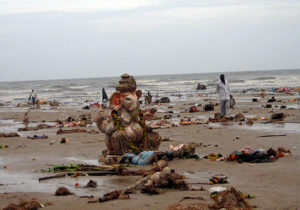 water bodies, of grounds, it saddens you a quite a bit. Newspapers will publish photos of washed up idols of Ganesha strewn across the beaches of Mumbai. A few familiar voices that try to leverage every thing for a personal PR, will suddenly appear on the scene and start with their familiar spiel of how the city is unable to cope with the sheer scale of the festival, they will ramble about the destruction of mangroves, of beaches, of the Arabian sea, and once they have got their 15 mins, they will shut up and into in hibernation.
water bodies, of grounds, it saddens you a quite a bit. Newspapers will publish photos of washed up idols of Ganesha strewn across the beaches of Mumbai. A few familiar voices that try to leverage every thing for a personal PR, will suddenly appear on the scene and start with their familiar spiel of how the city is unable to cope with the sheer scale of the festival, they will ramble about the destruction of mangroves, of beaches, of the Arabian sea, and once they have got their 15 mins, they will shut up and into in hibernation.
This whole environmental/ecological discussion has almost turned into a cycle, the narrative moves along familiar ways. It isn’t that the people at large have been oblivious or ignorant to the ecological impact of the visit by the celestial god. The immersion prices gas been largely streamlined, you can’t just immerse the idol anywhere that catches your fancy. There are designated points, there’s a process, and more importantly, there are people from the administrative side that oversee and conduct the whole process. Over the past couple of years, the judiciary too has done it’s bit in bringing some necessary checks and balances, the high court especially has been quite proactive in clamping down on noise pollution, or pulling up the government for shoddy work done.
On the common folks level, people have become sensitive and concerned about how the commonly available plaster-of-Paris (p-o-p) idols truly besmirch the lakes, rivers and the sea. Idols crafted with mud (Shadu mitti) are costlier but quite common. There are now idols that are available that dissipate into a potted plant, once the festival passes. Even the media, more so the FM radio channels drive home the point quite laboriously through many days before the festival.
 Personally, I have grappled with such issues myself, thrice has the elephant god visited my place, making me aware of the kind of challenges that present themselves, even when you are willing and keen to go green. While my first idol was a p-o-p one, the next two were of shadu mitti. Ideally, that should be making me happy and glad, as I seem to have have done my bit by going the “eco” way. But I frankly am not.
Personally, I have grappled with such issues myself, thrice has the elephant god visited my place, making me aware of the kind of challenges that present themselves, even when you are willing and keen to go green. While my first idol was a p-o-p one, the next two were of shadu mitti. Ideally, that should be making me happy and glad, as I seem to have have done my bit by going the “eco” way. But I frankly am not.
It’s only when, we started bringing in Ganesha at home, did I realise the scale of issues that confronts you. Greening in the idol is just one aspect of the festival, there’s much that needs to be done on that front.
Especially this year, I started to make notes of the environmental impact or rather the CO2 footprint of the Ganapati fest. In fact, we even tried to go in for eco-products in our quest to go green. It was costlier, but felt good. Yet, it is really not enough.
To give you an idea, let me enumerate with a few thoughts.
Beginning with the idol, while many people are now going in for eco-ganeshas (made of mud/clay) we embellish the idol in not-so ecological paints. The idols are painted in vivid colors, and accessorized with glassy objects that are anything but eco. In fact, idolly — or ideally, the idol must be in the pristine condition that it is made, with a natural color that manifests itself. While there could artistic refinements, there should be minimal embellishment of the idol itself. Continue reading

 conscious of mortality, about life, death and the things beyond our control. We see birds dying, people dying sadly in films and on TV, we hear about the deaths of some far-off uncles and aunties, and then there are these absolute strangers that die up in some conversations, that were snatched away by the pot-bellied Yama in some accident, disease, crime, or just about anything. Sadly, the blissful reverie and the innocence of childhood is besmirched by the burly god of death riding his dark buffalo to the underworld. It is at this age that it dawns upon us that life is a balloon that can be punctured by the prick of death. La Vita, is not necessarily and not always, est Bella.
conscious of mortality, about life, death and the things beyond our control. We see birds dying, people dying sadly in films and on TV, we hear about the deaths of some far-off uncles and aunties, and then there are these absolute strangers that die up in some conversations, that were snatched away by the pot-bellied Yama in some accident, disease, crime, or just about anything. Sadly, the blissful reverie and the innocence of childhood is besmirched by the burly god of death riding his dark buffalo to the underworld. It is at this age that it dawns upon us that life is a balloon that can be punctured by the prick of death. La Vita, is not necessarily and not always, est Bella.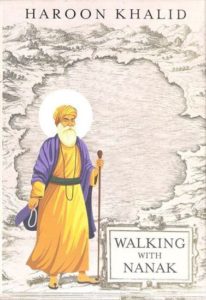 Search of Shiva. Basically, over the years Haroon has been writing on issues related to the minority communities in Pakistan, namely the Hindus and the Sikh. He is a sort of wandering chronicler who talks about the status and the current state of monuments related to Hindus and Sikhs in Pakistan.
Search of Shiva. Basically, over the years Haroon has been writing on issues related to the minority communities in Pakistan, namely the Hindus and the Sikh. He is a sort of wandering chronicler who talks about the status and the current state of monuments related to Hindus and Sikhs in Pakistan.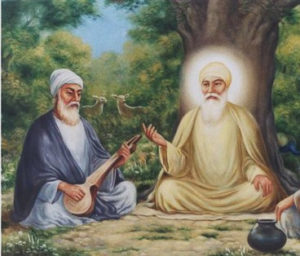 named Mardana, who was a Muslim man from his village. Mardana would accompany him and play rubab on which Guru Nanak would sing his poems. The bond between that of Guru Nanak and Mardana is that of a murshid (guide) and mureed (follower). Haroon too travels to all the sites accompanied by his murshid, Iqbal Qaiser, whom he considers to be his mentor (and much more). Being a scholar (self-taught) on Sikhism, conversations with Iqbal provide an interesting insight on what has been the religious state of affairs post partition.
named Mardana, who was a Muslim man from his village. Mardana would accompany him and play rubab on which Guru Nanak would sing his poems. The bond between that of Guru Nanak and Mardana is that of a murshid (guide) and mureed (follower). Haroon too travels to all the sites accompanied by his murshid, Iqbal Qaiser, whom he considers to be his mentor (and much more). Being a scholar (self-taught) on Sikhism, conversations with Iqbal provide an interesting insight on what has been the religious state of affairs post partition.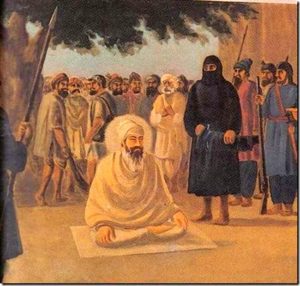 And also tackling the contentious history of the relation between the Mughals and the Sikh Gurus. In a strange karmic way, the destiny of the Mughals seemed to be entwined with Sikh Gurus. For instance, the first Mughal king Babur had an encounter with Guru Nanak, whom he jailed for a few days in 1519. Post that in 1606, the 5th Guru Arjan Das was executed and Guru Hargobind was incarcerated on the orders of Emperor Jahangir. Then in 1675, the 9th Guru Tegbahadur was killed on the orders of Emperor Aurangzeb. And then in 1707, the Mughal emperor Aurangzeb died, and the empire when into decline, the last living guru of the Sikhs, Guru Gobindsingh was murdered by Pathan horsemen in 1708. Haroon deals with this history at length, chronicling the transition of the Sikh Gurus as a religious head to that of a military one, like the formation of the Khalsa by Guru Tegh Bahadur. He also touches upon the fratricidal conflicts like the one with Prith Chand on the selection of his younger brother Arjan as the Guru. Or even the objection by Guru Nanak’s elder son and wife to the appointment of his disciple as a successor.
And also tackling the contentious history of the relation between the Mughals and the Sikh Gurus. In a strange karmic way, the destiny of the Mughals seemed to be entwined with Sikh Gurus. For instance, the first Mughal king Babur had an encounter with Guru Nanak, whom he jailed for a few days in 1519. Post that in 1606, the 5th Guru Arjan Das was executed and Guru Hargobind was incarcerated on the orders of Emperor Jahangir. Then in 1675, the 9th Guru Tegbahadur was killed on the orders of Emperor Aurangzeb. And then in 1707, the Mughal emperor Aurangzeb died, and the empire when into decline, the last living guru of the Sikhs, Guru Gobindsingh was murdered by Pathan horsemen in 1708. Haroon deals with this history at length, chronicling the transition of the Sikh Gurus as a religious head to that of a military one, like the formation of the Khalsa by Guru Tegh Bahadur. He also touches upon the fratricidal conflicts like the one with Prith Chand on the selection of his younger brother Arjan as the Guru. Or even the objection by Guru Nanak’s elder son and wife to the appointment of his disciple as a successor.  Bhat’s death seems to be like deja vu, a replay, of the anarchy that had gripped the Valley last year when Burhan Wani, another Hizbul terrorist, was gunned down by Indian forces.
Bhat’s death seems to be like deja vu, a replay, of the anarchy that had gripped the Valley last year when Burhan Wani, another Hizbul terrorist, was gunned down by Indian forces. 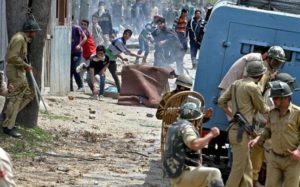 Meanwhile, back in mainland India, Kashmir is portrayed as a law and order problem, Pakistan is blamed for fanning the flames of violence, and so on. The common argument is that till 1989, weren’t the Kashmiris cohabiting with Indians happily, letting the Yash Chopras of the world shoot Bollywood movies in the charming locales. Now, if azaadi was not desirable till the 90s, how did the game change so drastically and dramatically? Why did the Shikara-driving or Kahwa-sipping Kashmiri suddenly develop political ambitions and such massive ones?
Meanwhile, back in mainland India, Kashmir is portrayed as a law and order problem, Pakistan is blamed for fanning the flames of violence, and so on. The common argument is that till 1989, weren’t the Kashmiris cohabiting with Indians happily, letting the Yash Chopras of the world shoot Bollywood movies in the charming locales. Now, if azaadi was not desirable till the 90s, how did the game change so drastically and dramatically? Why did the Shikara-driving or Kahwa-sipping Kashmiri suddenly develop political ambitions and such massive ones?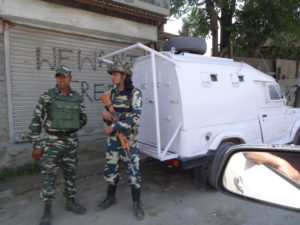 the camps, the schools, the ATMs, everywhere that you see are men in fatigues armed with automatics. One gets a rather odd feeling at seeing such pervasive military presence. I mean, you kind of wonder, whether you have accidentally landed in Kabul or Baghdad instead of Srinagar.
the camps, the schools, the ATMs, everywhere that you see are men in fatigues armed with automatics. One gets a rather odd feeling at seeing such pervasive military presence. I mean, you kind of wonder, whether you have accidentally landed in Kabul or Baghdad instead of Srinagar. claimed himself to be a fan of Hindus, an admirer of Modi, not to mention his takes in Indian real estate market, all these pointed to a rosy future.
claimed himself to be a fan of Hindus, an admirer of Modi, not to mention his takes in Indian real estate market, all these pointed to a rosy future.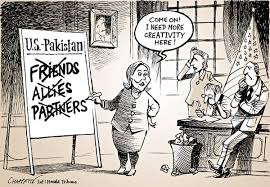 denying a place in the security council, to imposing economic sanctions after the nuclear tests; caught between the love of Islamabad and the scepticism of Beijing, New Delhi seemed to have mattered very less. In fact, between the years of 1978-2000, there was not a single US presidential visit to India, from Jimmy Carter to Bill Clinton.
denying a place in the security council, to imposing economic sanctions after the nuclear tests; caught between the love of Islamabad and the scepticism of Beijing, New Delhi seemed to have mattered very less. In fact, between the years of 1978-2000, there was not a single US presidential visit to India, from Jimmy Carter to Bill Clinton. screenplay of the movie. And no Benjamin is not some celeb writer or some Pulitzer-prize winner. You see, Benjamin happens to be a rather nondescript piece of technology, which goes by the real name as a recurrent neural network called long short-term memory, or LSTM for short.
screenplay of the movie. And no Benjamin is not some celeb writer or some Pulitzer-prize winner. You see, Benjamin happens to be a rather nondescript piece of technology, which goes by the real name as a recurrent neural network called long short-term memory, or LSTM for short. 1950s, he had meant it a bit different, dubbing it, “It is the science and engineering of making intelligent machines, especially intelligent computer programs. It is related to the similar task of using computers to understand human intelligence, but AI does not have to confine itself to methods that are biologically observable.”
1950s, he had meant it a bit different, dubbing it, “It is the science and engineering of making intelligent machines, especially intelligent computer programs. It is related to the similar task of using computers to understand human intelligence, but AI does not have to confine itself to methods that are biologically observable.”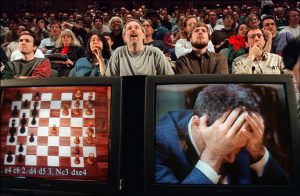 Kasparov in a rematch in 1997, after having decidedly lost to the master in 1996. It seemed to have evolved, learnt from its flaws, analysed its opponent’s strength.
Kasparov in a rematch in 1997, after having decidedly lost to the master in 1996. It seemed to have evolved, learnt from its flaws, analysed its opponent’s strength.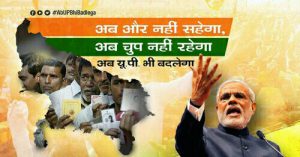 Shekhar, Atal Behari Vajpayee and now even Narendra Modi. In a sense of terms, UP is like the steering-wheel of Indian politics, he (or she) who controls UP, can steer the politics of this nation in his/her wake.
Shekhar, Atal Behari Vajpayee and now even Narendra Modi. In a sense of terms, UP is like the steering-wheel of Indian politics, he (or she) who controls UP, can steer the politics of this nation in his/her wake.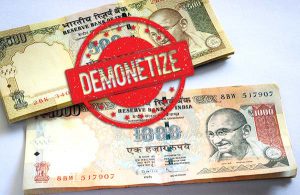 each person’s account to give a size of the problem. Yet, while the figure was notional, it was used a baton to whack BJP and especially PM Modi every now and then. “Where’s the black money in my account?” had become a common jibe by the opposition party leaders like Rahul Gandhi, Arvind Kejriwal, Mamta Banerjee and so on.
each person’s account to give a size of the problem. Yet, while the figure was notional, it was used a baton to whack BJP and especially PM Modi every now and then. “Where’s the black money in my account?” had become a common jibe by the opposition party leaders like Rahul Gandhi, Arvind Kejriwal, Mamta Banerjee and so on.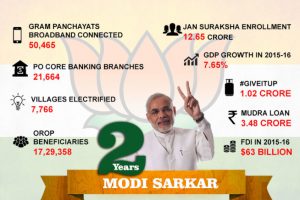 complementary actions towards digitization are undertaken, demonetization could actually accelerate the shift to a cashless — thereby transparent and yes, less corrupt — society. Recently, the Secretary General of Paris-based Organisation for Economic Cooperation and Development (OECD), Angel Gurria came all out in support of demonetization. “India has been a star performer in gloomy times. We do not have many cases of 7% growth (GDP). It is a top reformer among all the G-20 countries”
complementary actions towards digitization are undertaken, demonetization could actually accelerate the shift to a cashless — thereby transparent and yes, less corrupt — society. Recently, the Secretary General of Paris-based Organisation for Economic Cooperation and Development (OECD), Angel Gurria came all out in support of demonetization. “India has been a star performer in gloomy times. We do not have many cases of 7% growth (GDP). It is a top reformer among all the G-20 countries”
 times, almost equally in casualties as that of Gyaneshwari Express in which some 150 had died in 2010, when the train had been derailed by Maoists in West Bengal. The scale of deaths and injuries makes the current accident, one of the worst in the history of Indian Railways. Sadly, going by the things as they are, this accident won’t certainly be the last “major one” in India’s transport sector.
times, almost equally in casualties as that of Gyaneshwari Express in which some 150 had died in 2010, when the train had been derailed by Maoists in West Bengal. The scale of deaths and injuries makes the current accident, one of the worst in the history of Indian Railways. Sadly, going by the things as they are, this accident won’t certainly be the last “major one” in India’s transport sector.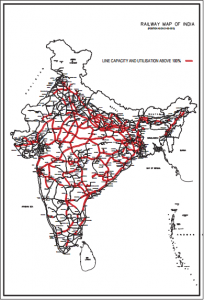 railways have a network of more than
railways have a network of more than 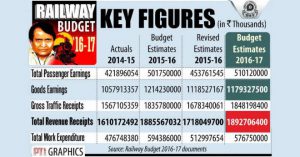 to come. Indian Railways (IR) is right now like a patient that is afflicted with tuberculosis, the symptoms are all there. But if we only concentrate on the manifestation and ignore the ailment, the patient is going to eventually die. The prognosis for IR is similarly dour. And here’s why:
to come. Indian Railways (IR) is right now like a patient that is afflicted with tuberculosis, the symptoms are all there. But if we only concentrate on the manifestation and ignore the ailment, the patient is going to eventually die. The prognosis for IR is similarly dour. And here’s why: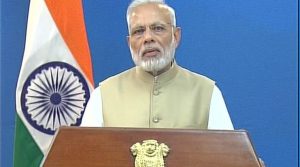 dour looking PM then in the 20 mins made an announcement that sent the whole country in a tizzy. He announced a war on black money with almost immediate demonetization of 500 & 1000 Rupee notes. “The arrangement of buying and selling through existing 500 and 1000 notes will not be available. These will be just worthless piece of paper”.
dour looking PM then in the 20 mins made an announcement that sent the whole country in a tizzy. He announced a war on black money with almost immediate demonetization of 500 & 1000 Rupee notes. “The arrangement of buying and selling through existing 500 and 1000 notes will not be available. These will be just worthless piece of paper”.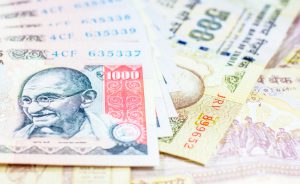 word spread, the exchange stalled. No one was ready to touch the currency with a barge pole. Shopkeeperrs would smile indulgently on being offered these notes. Outside ATMs, there was a huge queue of people, withdrawing 400 bucks at a time. Ditto, long queues at petrol pumps, as people tried to use the notes to tank up their vehicles. Even on the television, you could all these people standing outside ATMs and petrol pumps trying to lay their hands on whatever 100 or 50 they could lay their hands on. People across the board were confused, irritated, and even angry at the way their Tuesday night had been laid waste. But yet, almost all were in agreement that it was a bold, necessary and welcome move by the government. There was hardly a soul on the road, who did not support or complement PM Modi on this move.
word spread, the exchange stalled. No one was ready to touch the currency with a barge pole. Shopkeeperrs would smile indulgently on being offered these notes. Outside ATMs, there was a huge queue of people, withdrawing 400 bucks at a time. Ditto, long queues at petrol pumps, as people tried to use the notes to tank up their vehicles. Even on the television, you could all these people standing outside ATMs and petrol pumps trying to lay their hands on whatever 100 or 50 they could lay their hands on. People across the board were confused, irritated, and even angry at the way their Tuesday night had been laid waste. But yet, almost all were in agreement that it was a bold, necessary and welcome move by the government. There was hardly a soul on the road, who did not support or complement PM Modi on this move.